Aneura mirabilis, aka the ghostwort, is a very strange liverwort indeed. And it’s not as if liverworts in general have a reputation for being the most “vanilla” of green plants (that accolade presumably goes to Vanilla planifolia).
Did I say “green plants”? Well, yes, strictly speaking the ghostwort, like all liverworts, is an embryophyte, i.e. a member of the group that includes all green land plants. And nearly all liverworts are green. The ghostwort, however, is a pallid sepia-white, as drained of colour as any Halloween ghoul.
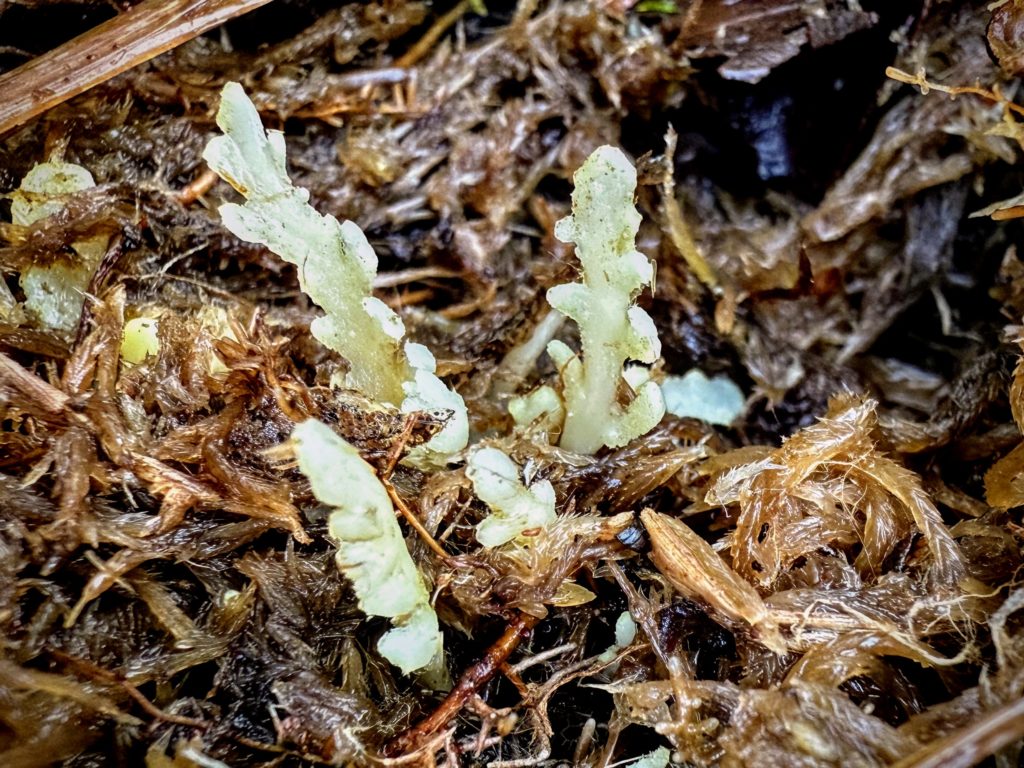
Just as a vampire shuns light and preys on the blood of others for sustenance, so the ghostwort hides underground and sucks life from other organisms. It’s what’s termed a myco-heterotroph, which means that it can’t make its own food (as most plants do using sunlight), and instead obtains it from fungi. In fact, Aneura mirabilis is an epiparasite – it’s parasitic on an organism that’s itself a parasite! It has been shown that the ghostwort is completely incapable of photosynthesis, and gets its food from a fungus called Tulasnella. This fungus in turn forms an ectomycorrhizal association with the roots of nearby trees (usually birch). So the ghostwort is ultimately getting its sustenance from photosynthesis in the leaves of the birch tree, through the (literally) convoluted route of the tree’s roots and then the parasitic fungus.
Aneura mirabilis is rather uncommon, being found in scattered localities throughout Britain and Ireland, Scandinavia and a few other Western European countries. There is a record from Greenland, while a second species of Aneura discovered in Costa Rica, Aneura crumii, also seems to be a myco-heterotroph. So when Jim Dickson, retired Professor of Archeobotany and Plant Systematics at Glasgow University, invited me to come and collect some papers and specimens he was donating to RBGE and mentioned that he knew of a site for Aneura mirabilis just down the road from his home in Milngavie, the prospect of a ghostwort hunt was too tempting to resist. All the more so given that the genus Aneura has been a research focus of colleagues at RBGE for some time (see, e.g., this post by Laura Forrest on the Pellia-like Aneura species).
So it was that a small team of bryologists from RBGE (myself, David Bell and Mari Wilson) set out to a spot east of Milngavie where Prof. Dickson had seen the plant about 20 years previously. Imagine our disappointment on discovering that the area Jim remembered as being where he saw the ghostwort is now part of a golf course… We were just about to head home when we spotted a small area of damp woodland beside the road, and thought that we might as well have a quick look.
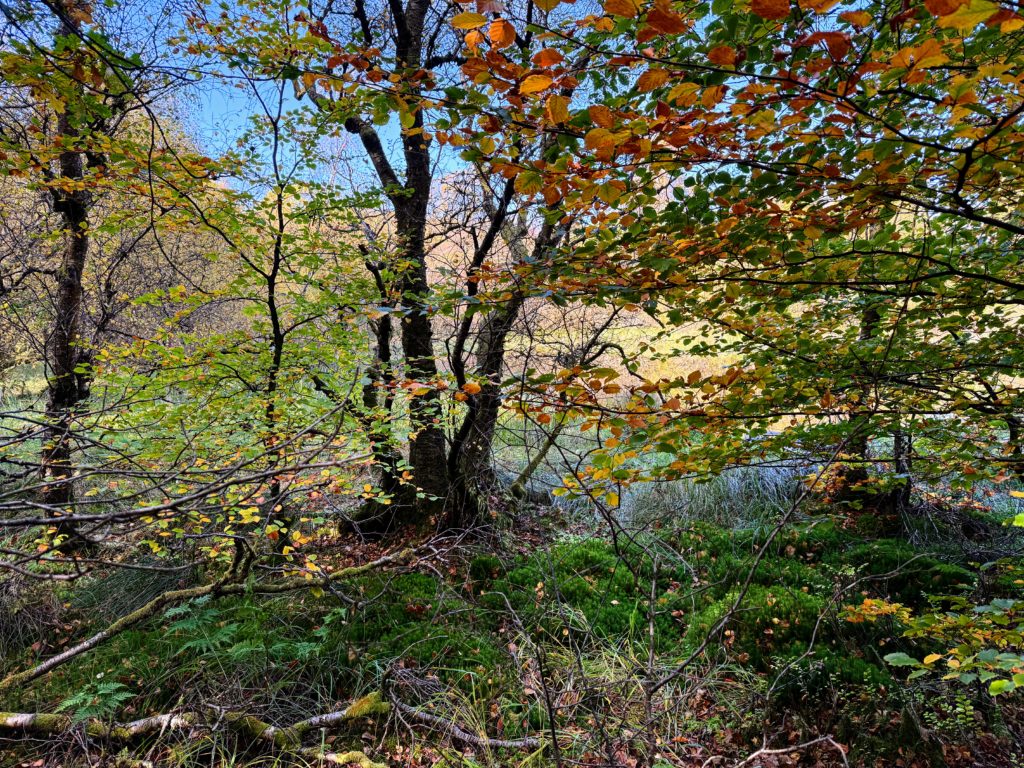
As with many bryophytes, the trick to finding the ghostwort is finding and recognising its habitat. In Scotland, this is generally wet (but not permanently waterlogged) ground with Sphagnum moss in scattered birch woodland. Walking through the woodland we naturally gravitated towards a small pond marked on the map that was fringed with birch trees on boggy ground. Because the ghostwort shuns light and grows under the surface of the soil, you have to carefully lift the mats of Sphagnum in the hope of discovery. We weren’t particularly hopeful – which made it all the more exciting to discover several large colonies on the third or fourth attempt!
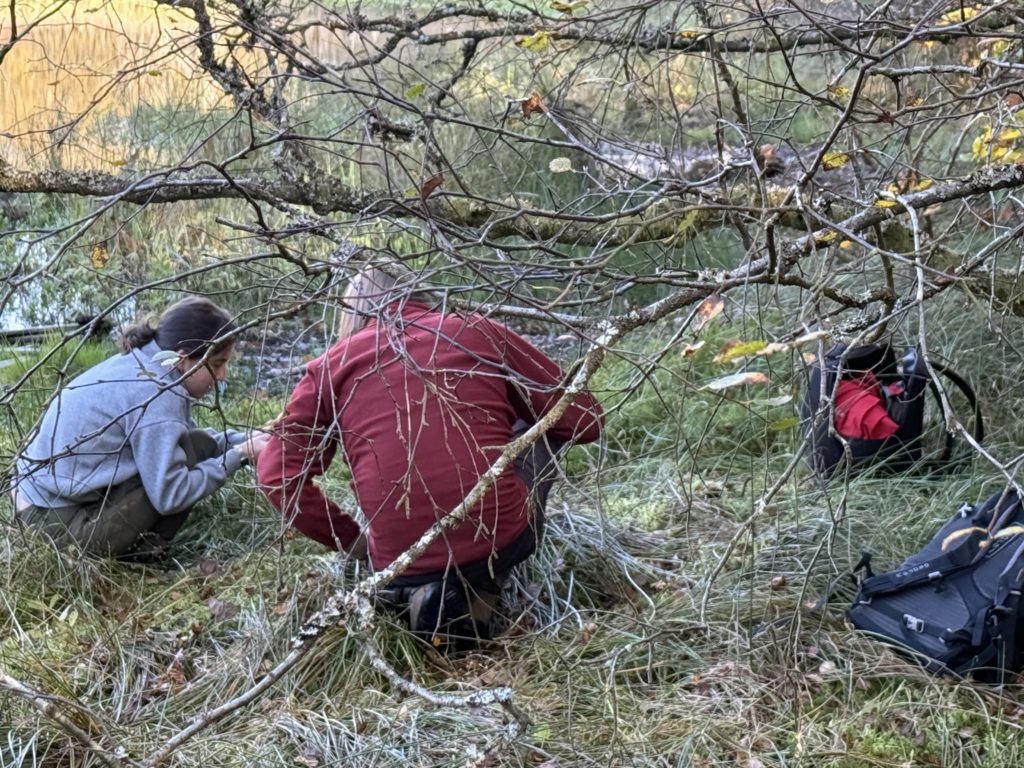
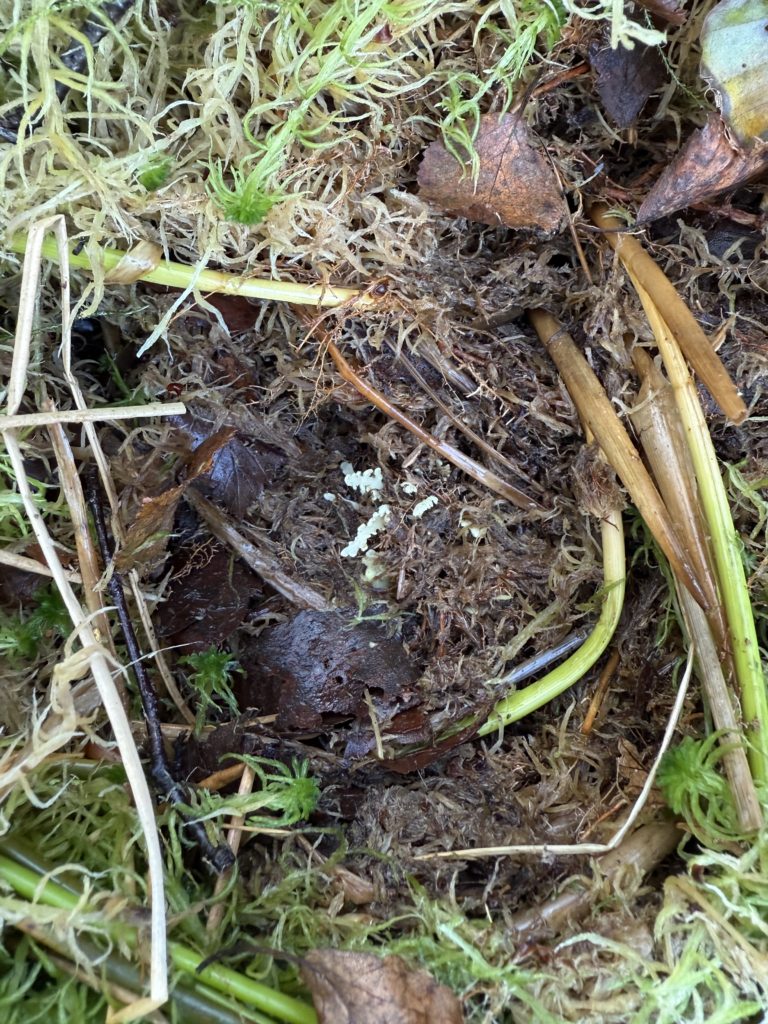
Jim, waiting for us back in the car, was particularly pleased that we had re-found his ghostwort, which he prefers still to call Cryptothallus – the name it had before evidence from molecular data showed it to have evolved from within the genus Aneura. Indeed, the plant is abundantly worthy of generic status on the basis of its unique features and lifestyle. Because it has arisen from within Aneura, however, there are some species of Aneura that are more closely related to the ghostwort than they are to other species of Aneura, meaning that the ghostwort is best classified within this genus too.
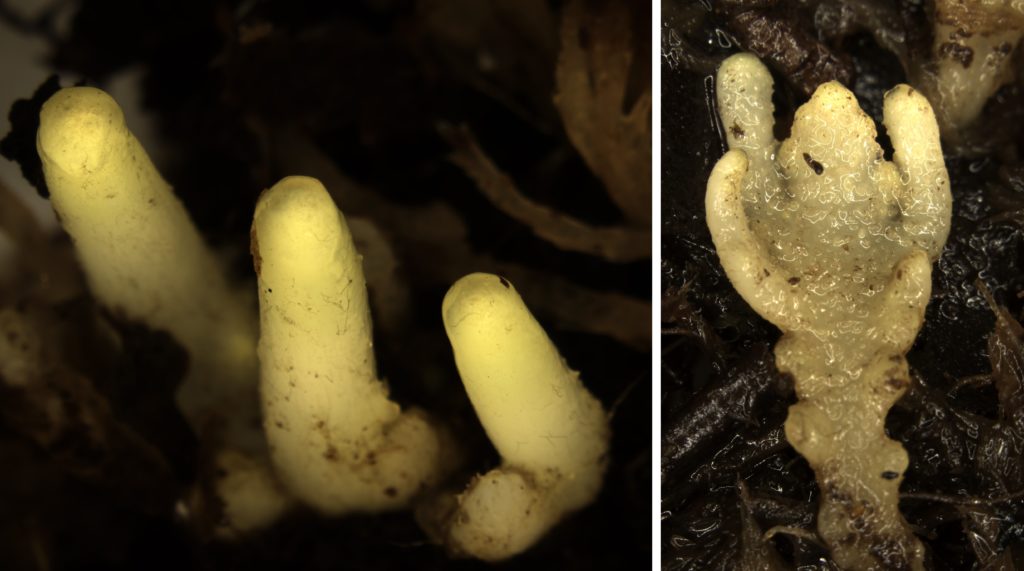
Happy Halloween everyone!
- Read D. J., Duckett J. G., Francis R., Ligrone R. & Russell A. 2000. Symbiotic fungal associations in ‘lower’ land plants. Phil. Trans. R. Soc. Lond. B355815–831. http://doi.org/10.1098/rstb.2000.0617
- Wickett N. & Goffinet B. 2008. Origin and relationships of the myco-heterotrophic liverwort Cryptothallus mirabilis Malmb. (Metzgeriales, Marchantiophyta). Botanical Journal of the Linnean Society. 156. 1-12. 10.1111/j.1095-8339.2007.00743.x.
- Wickett N. J., Zhang Y., Kellon Hansen S., Roper J. M., Kuehl J. V., Plock S. A., Wolf P. G, dePamphilis C. W., Boore J. L. & Goffinet B. 2008. Functional Gene Losses Occur with Minimal Size Reduction in the Plastid Genome of the Parasitic Liverwort Aneura mirabilis. Molecular Biology and Evolution. 25: 2. 393–401. https://doi.org/10.1093/molbev/msm267
